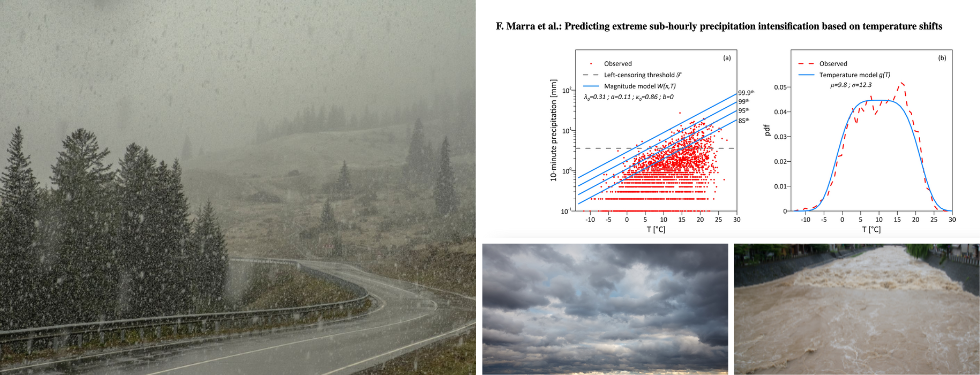A new model to predict the future frequency of short-duration extreme rainfall events

Extreme rainfall events of short duration, such as very intense ones that deliver a huge amount of water over only a few minutes or at most an hour, are becoming increasingly fierce worldwide due to climate change. In the future, these types of events are likely to occur more frequently. However, it is tough to estimate the probability of rare precipitation events, such as storms that are called ‘100-year storms” because they have a recurrence interval of a century, meaning there's just a 1% chance of that event occurring in a given year.
The traditional methods utilized for estimating the frequency of extreme precipitation events are proving to be ineffective in a swiftly evolving environment. Furthermore, historical rainfall data exhibit numerous gaps across various global regions. This situation engenders substantial societal risks, as the construction of critical infrastructure, such as dikes and dams, and land planning activities, rely on inadequate statistical information.
A milestone in the science of short-duration rainfall has been the recognition of “scaling relationships” between heavy rainfall and near-surface temperature. According to the well-known Clausius-Clapeyron equation, for every 1°C increase in temperature, the atmosphere increases its water-holding capacity by 7%. However, when the atmosphere warms, the resulting rainfall can be greater - sometimes by much more - than what can be explained by the increase in water vapour alone. This super-CC scaling is maintained until very high air temperatures above 20-25 °C are reached, beyond which extreme precipitation seems to decrease.
Recognizing the significance of these scaling relationships in analyzing precipitation frequency, a study led by Francesco Marra, a researcher at the Department of Geosciences at the University of Padua, in collaboration with the Department of Statistical Sciences at the same university and the University of Lausanne, introduced a temperature-dependent model for analyzing the frequency of future short-duration extremes. The model, known as TENAX (TEmperature-dependent Non-Asymptotic statistical model for eXtreme return levels), utilized data from multiple meteorological stations in Switzerland. The findings, published in the journal Hydrology and Earth System Sciences, demonstrate that the model has the potential to assess changes in sub-hourly extreme precipitation in a simpler, more accurate, and more credible manner than is currently feasible.
“With the TENAX model, one can project sub-hourly rainfall extremes at different probability levels based on past observations and daily scale projections from climate models”, Dr. Francesco Marra explains. The model, he adds, is now going to be applied to other studies focused on the entire Alpine region.
The study was conducted within the framework of the Excellence Project “Geosciences Sciences for Sustainable Development (2023-2027)” carried out by the Department of Geosciences of the University of Padua.
PRESS INFORMATION:
PAPER TITLE: Predicting extreme sub-hourly precipitation intensification based on temperature shifts
LINK: https://hess.copernicus.org/articles/28/375/2024/#section6
DOI: 10.5194/hess-28-375-2024
AUTORI: Francesco Marra, Marika Koukoula, Antonio Canale, Nadav Peleg (2024)





